Table of contents
Hazelnuts ( Corylus spp.) have an intensely nutty taste. They are great as a snack when eaten raw and go wonderfully in all kinds of baked goods and desserts, but can also be used in savory dishes - preferably in organic quality.
Using hazelnuts in the kitchen:
The majority of hazelnuts available in stores come from the Lambert hazel ( Corylus maxima ) and not from the common hazel ( Corylus avellana ) - assuming that the two can be distinguished as separate species (see below). The nuts are difficult to tell apart and a declaration is rarely found. In this article, we therefore use the term hazelnut for both.
Hazelnut kernels have an aromatic taste, sometimes with a slightly bitter note. You can use peeled hazelnuts whole or ground. How do you peel hazelnuts? The nuts can be easily opened with pliers. Another method is the following: wrap the hazelnut in a kitchen towel, place a rolling pin or a wooden spoon on top, hit it with your hand with a little pressure and remove the shell. However, this process is often not necessary, as you usually find hazelnuts unshelled in the shops.
Can you eat hazelnuts raw? Yes, because raw nuts are healthier than heated ones. Hazelnuts are particularly popular as a raw food snack or in muesli for breakfast (e.g. quinoa and nut muesli ). They are also popular for making baked goods and desserts, such as bread, cakes, tarts, cookies, flans (sheet cakes with shortcrust pastry), nut peaks, cinnamon rolls, fruit and nut balls or ice cream. The nuts also taste good when made into a fine chocolate and hazelnut spread. Hazelnuts are also used to make nougat, hazelnut milk (a vegan milk alternative) and hazelnut oil . Hazelnuts and vegan dark chocolate can be used to make a delicious nut and chocolate bar.
Hazelnuts also taste good in salty, hearty dishes. They can be used to make tasty pesto (classic with basil , but also with spinach , rocket or dried tomatoes ), fillings for cannelloni or tortellini and vegetable soups (e.g. with broccoli or parsnips ). Hazelnut potatoes (i.e. potatoes that have been fried together with hazelnuts in a little oil or margarine ) and sauerkraut with hazelnuts are also recommended. Salads can also be spiced up with raw hazelnuts - the nuts go perfectly with raw salad creations made from lamb's lettuce , carrots or beetroot . Vegan stuffed onions with hazelnuts and broccoli are a welcome change from tapas.
Recipe for vegan Brussels sprouts and hazelnut salad:
Ingredients (for 2 people): 250 g Brussels sprouts (raw), 1 apple , ½ red onion , 50 g hazelnuts (raw, organic), 2 tbsp rapeseed oil , 2 tbsp apple cider vinegar , 1 tbsp maple syrup , ½ tsp mustard , some salt andpepper .
Preparation: Clean the raw Brussels sprouts well and shred finely. Rinse the apple, quarter it, remove the core and cut into thin slices. Peel half the red onion and chop finely. Roughly chop the hazelnuts. Mix the rapeseed oil, apple cider vinegar, maple syrup and mustard and season with salt and pepper. Put the Brussels sprouts, apple, red onion and hazelnuts in a bowl, pour the dressing over them and mix everything well. Season the vegan Brussels sprout and hazelnut salad with a little salt and pepper to taste and serve.
Vegan recipes with hazelnuts can be found under the note: " Recipes that have the most of this ingredient ".
| Not only vegans or vegetarians should read this: Vegans often eat unhealthily. Avoidable nutritional mistakes . |
Shopping - where to buy hazelnuts?
Many supermarkets (e.g. Coop , Migros , Denner , Volg , Spar , Billa , Aldi , Lidl , Rewe , Edeka , Hofer ), organic supermarkets (e.g. Alnatura , Denn's Biomarkt ) and health food stores have shelled hazelnuts on offer all year round - even in organic quality (often as 'organic hazelnut kernels, shelled'). Raw hazelnuts with shells are usually only available in well-stocked branches of larger supermarkets (e.g. Coop ) or in online shops. Roasted hazelnuts and ground hazelnuts are also often available in stores.
Raw food quality depends on the supplier and is linked to trust in the producers. Depending on the temperature control during drying, the nuts sold are either gently dried - or exposed to high temperatures (see "Cultivation - Harvest"). In addition, the term "raw food" is not subject to any official controls.
The availability of hazelnuts in the supermarkets mentioned varies depending on the size of the store, catchment area, etc. If you are interested, click on our recorded food prices for the DA-CH countries (above under the ingredient image). There you will find current prices from various supermarkets and their price development.
Found in the wild:
The common hazel, Corylus avellana, has a natural geographical distribution area that extends across Europe and Western Asia, across Portugal, Ireland, the Orkney Islands, Norway, Sweden, Russia, Kazakhstan, Iran, Iraq, Syria, Lebanon, Greece, Italy and Spain. It occurs in the wild up to 1,500 m above sea level. The plant is widespread in mixed deciduous forests and along paths and country roads. 1 The cited source makes no distinction between Corylus avellana and Corylus maxima in this area, 1 as it defines the latter as a subgroup - see below (Ecological aspects; General information).
Storage:
The high fat content of hazelnuts promotes rancidity. Therefore, the nuts should be stored in a cool, dry place and tightly closed. In optimal conditions, hazelnuts in their shells will last up to a year, but shelled hazelnuts should be consumed within a few months.
Hazelnuts: Ingredients - Nutritional values - Calories:
What nutrients do hazelnuts have? The energy content of hazelnuts (raw) is 628 kcal per 100 g. The nuts are extremely high in fat. 100 g of hazelnuts contain 61 g of fat, which makes up 86.8% of the daily requirement. Of this, 4.5 g are saturated fats. There are 17 g of carbohydrates and 9.7 g of fiber per 100 g. With 15 g of protein per 100 g, hazelnuts are relatively high in protein. 2
Raw hazelnuts are particularly rich in manganese . The content of 6.2 mg/100g (309% of the daily requirement) is higher than that of pecans (4.5 mg/100g) and macadamia nuts (4.1 mg/100g). Pine nuts have slightly more manganese at 8.8 mg/100g. 2
100 g of hazelnuts (raw) also contain 15 mg of vitamin E (125% of the daily requirement). Almonds contain more vitamin E (26 mg/100g), and peanuts contain less (8.3 mg/100g). Sunflower seeds contain even more, at 35 mg/100g. 2
Raw hazelnuts contain 62 µg biotin (ex vitamin B 7 ) per 100 g (123 % of the daily requirement), which is more than walnuts (36 µg/100g), peanuts (34 µg/100g), pistachios (18 µg/100g) and cashews (11 µg/100g). 2
In contrast, the anti-inflammatory omega-3 fatty acid is underrepresented (0.09 g/100g). The fatty acid ratio (omega-6:omega-3 or LA:ALA) is 71:1, which is in the unfavorable range. Macadamia nuts (ratio of 6:1), walnuts (ratio of 4:1) and linseed (1:4) are better off here. 2 You can read more about this under the ingredient olive oil .
The complete ingredients and nutrients of hazelnuts (raw), the coverage of the daily requirement and comparison values with other ingredients can be found in our nutrient tables. In the article Nutrients explained you will get a detailed insight into the topic.
Dangers - Intolerances - Side effects:
Hazelnuts are a significant source of allergens and their consumption can trigger allergic reactions in sensitized people, ranging from 'mild' to 'potentially life-threatening'. 9
Hazelnuts that smell musty, are too bitter and have a dark color indicate an infestation with mold that produces the mycotoxin aflatoxin, which is poisonous to humans. Such specimens should be disposed of immediately. 10
Health aspects - effects:
Are hazelnut kernels healthy? Hazelnuts are high-calorie foods that are useful in cases of increased energy requirements (such as athletes, adolescents, convalescents, pregnant and breastfeeding women). 3 A 2019 study shows that regular consumption of the nuts within normal limits did not lead to weight gain or an increase in fat mass, despite the high calorie and fat content. The authors even encourage the inclusion of hazelnuts in weight loss diets. Reasons for this include the induction of satiety, the increase in energy expenditure and thermogenesis, and the antioxidant capacity. The results of the study also suggest that regular consumption of a small amount of hazelnuts is healthy and could represent a dietary treatment for chronic, degenerative diseases associated with oxidative stress and inflammation. 4 A 2015 study on Lambert hazelnuts ( Corylus maxima ) also shows antioxidant effects. 5
Hazelnuts are also able to reduce the risk of cardiovascular disease by having a positive effect on blood lipid levels. 6 The nut also has anti-inflammatory and antimicrobial properties. 4,6,7 Regular consumption is also said to have a preventive effect on the formation of kidney stones. 3
In traditional Persian medicine, the three types of nuts, hazelnut, almond and walnut, are listed as preventive agents against brain atrophy and memory loss (based on many years of experience and numerous clinical observations). Thanks to these positive effects on the brain and its performance, the potential of hazelnuts as a preventive or even therapeutic agent against Alzheimer's disease is currently being investigated. 8
Distribution - Origin - Ecology:
The genus Corylus originated in southwest China during the middle Eocene (56-33.9 million years ago). Corylus has a typically disjunct distribution across the northern hemisphere (East Asia, North America, European Mediterranean, Himalayas). 11
The common hazelnut ( Corylus avellana ) is a traditional Mediterranean crop native to Europe and western Asia; it has been introduced to continental America. 1 Today, the plant is a popular nut tree with edible nut fruit all over the world. 7 The Lambert hazel ( Corylus maxima ) is found mainly in southeastern Europe (Italy, Greece, Spain) and Turkey. 5
Growing in the garden or as a pot plant:
In addition to the native common hazel ( Corylus avellana ), the Lambert's nut ( Corylus maxima ) is also suitable for planting in your own garden. Both prefer a sunny to partially shaded location with fertile soil. The frost-hardy hazelnut plant should be planted out in spring or autumn. Water the plants regularly - especially in summer - and fertilize them once a year with organic fertilizer. 12
The shrub tolerates pruning. Older, thick shoots are removed from the bottom up - this way the shrub is not too dense. It is best to prune the shrub after flowering. Different types of hazelnut need a pollinator to develop a fruit set, while others are self-pollinating. It can take several years for the shrub to bear its first nuts. The harvest begins in September. In Europe the season is September to October . In the USA the season is October to November. 17 Availability is practically always guaranteed, often as an import from Italy.
The ripe nuts fall to the ground or you can shake them gently to get them to the ground. 12 Unripe hazelnuts are greenish and are still firmly attached to the fruit shell. Since nuts do not ripen well once they have been harvested, it is better not to harvest green hazelnuts.
Can you eat hazelnuts fresh? A harvested, ripe hazelnut can be eaten fresh from the bush, but it is usually dried for a few weeks.
Cultivation - Harvest:
A suitable climate and reliable rainfall (irrigation if necessary) are important for good growth of hazelnut plants and the production of high-quality nuts. The preferred climate is characterized by a mild summer and a cool winter. The plants also need soil that is well-drained to a depth of 1.8 m. Cold phases of around 1,200 hours at 5-7 °C are necessary to ensure fertility and reliable hazelnut yields. The plants do not tolerate temperatures below -5 °C, but also temperatures that are too high (combined with windy conditions and low humidity). More than 750 mm of annual rainfall is required for good production. 13
Efficient processing and storage of hazelnuts requires that the high moisture content after harvest is reduced to 7.8% (for unshelled hazelnuts) or 4-5% (for shelled hazelnuts) in order to prevent the growth of microorganisms. Hazelnuts are usually dried by blowing warm to hot air over the nuts, 14 either in nut stores or in special heating devices. 16 The drying process can take place at low temperatures (20-36 °C 16 ), which increases the process time; however, drying is also carried out at higher temperatures (over 45 °C), which means that the nuts cannot be described as "raw food".
Ecological aspects:
Unfortunately, pesticides are often used on conventional hazelnut plantations . The water consumption of these plantations is also relatively high. Organic hazelnut cultivation (bio) ensures that the cultivation is environmentally friendly - without chemical pesticides. In addition, the stored organic hazelnuts are not fumigated with toxic substances to remove microorganisms, as is usual in conventional cultivation, but pressure disinfestation is used (pest control using high-pressure processes). 10
The results of a Turkish study from 2018 indicated that organic hazelnut production is overall more sustainable than conventional production - in terms of economic, ecological and social sustainability. Organic hazelnut cultivation achieved higher incomes, higher levels of education among farmers and better environmental compatibility through the use of organic cultivation methods and resources than conventional cultivation. 15
General information:
The genus of hazels ( Corylus spp.) belongs to the subfamily of hazelnuts (Coryloideae) within the family of birch plants (Betulaceae). These deciduous shrubs or trees produce nuts of different sizes as fruits. Depending on the taxonomic classification, the number of species within the genus Corylus varies between 9 and 25. 1
The common hazel ( Corylus avellana ) is a very polymorphic species and includes many varieties. It was divided into subgroups that some authors consider to be separate species: Corylus maxima and Corylus colchica . However, it is now believed that these species should be placed within C. avellana because they show continuous variation in morphology, hybridize easily and overlap in geographical distribution. Furthermore, DNA fingerprint data suggest a common origin of C. maxima and C. avellana . 1
Alternative names:
Other names for the hazelnut are: Augstnuss, Drateln, Hagnuss, Hasel, Hassel and Haxelnuss. Incorrect spellings (eg Haselnusse, Hasselnüsse, Haselnus, Hasenuss, Haselnu) creep in.
In English, hazelnuts are called hazelnuts, cobnuts or filberts 1 (filbert fruits).
Keywords for use:
The wood of the hazelnut bush is a good wood for hobby craftsmen and carvers because it is easy to work with. Some cultivars are also used as ornamental shrubs in gardens. If you buy hazelnuts with the shell on, you can use the hazelnut shells for lighting fires, as they burn well.

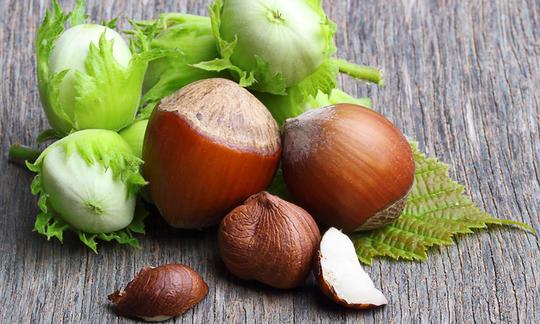

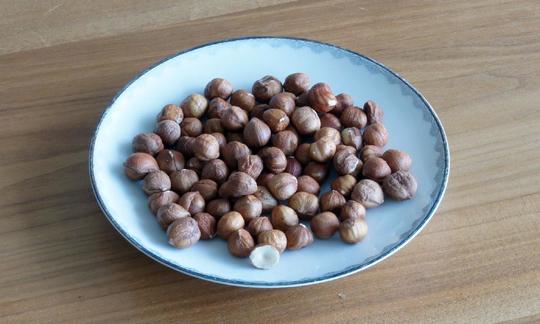

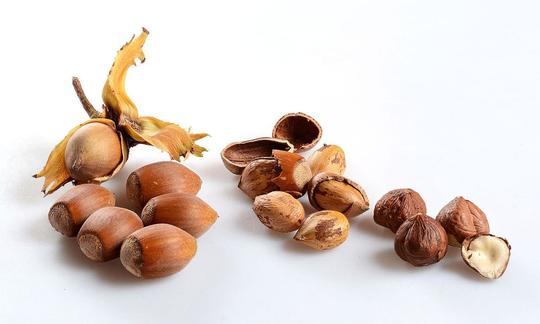

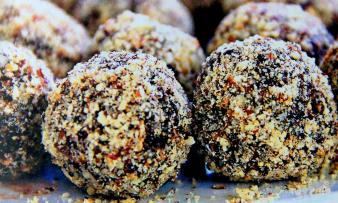
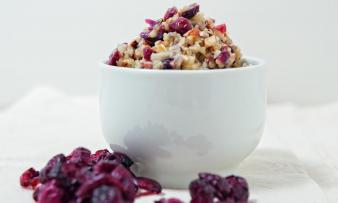
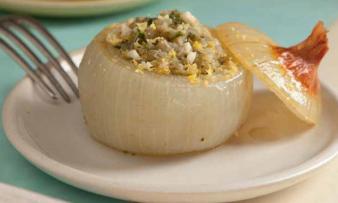





Comments